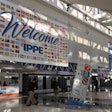
Julian Madeley, CEO, International Egg Commission (IEC), told the audience at the United Egg Producers’ Committee Briefings in Atlanta, Georgia, on January 24, 2023, that the IEC believes that vaccination is part of the long-term solution in the fight against highly pathogenic avian influenza (HPAI). He explained that it is up to each country to decide if and when it is appropriate for them to implement vaccination.
Madeley said that the three key issues that need to be addressed regarding vaccination for HPAI are development of new vaccines and programs for administering them, development of effective surveillance programs, and an agreement on the impact of vaccination on trade.
HPAI vaccines are currently being tested in France, Italy, Hungary and the Netherlands, according to Greg Hinton, VP of sales for Rose Acre Farms, and IEC chairman.
Madeley said that in January 2023, France approved use of HPAI vaccination beginning in September of 2023. He also said legislation has been introduced to allow HPAI vaccinations across the EU, individual countries would still need to make a decision on whether to allow vaccination.
The World Organization for Animal Health (WOAH) regulations hold that trade barriers aren’t necessary if a country vaccinates for a reportable disease if the surveillance program in the country is strong enough, Madeley reported. He said that the IEC is developing a blueprint for an HPAI surveillance program.
He suggested that political and public pressure to vaccinate may overtake concerns of the poultry industry regarding trade. Governments may tire of making indemnity payments and say why not use vaccines to prevent animal disease instead.
Madeley predicted that if current rate of HPAI infections continue, we may see vaccination adopted across many countries throughout the world.
Why this outbreak is different
David Swayne, DVM, retired lab director, Southeast Poultry Research Laboratory, and currently a consultant, with Birdflu Veterinarian LLC, said that the current H5N1 outbreak strain was first detected in wild birds Siberia in 2020. From there the virus spread in wild birds to Europe and then to Africa and the Middle East. The virus was first detected in North America in fall of 2021 and has moved in wild birds to Central and South America in the fall of 2022.
Swayne called this outbreak’s virus a “cousin” of the one in 2014-15. The virus has been found in wild birds in all U.S. states except Hawaii during the 2022-23 outbreak, it was only found in wild birds in 15 states in 2014-15.
Swayne outlined the reason why vaccination for HPAI could make sense as part of a country’s stamping out efforts:
- Increase resistance to HPAI infection
- Reduce HPAI replication in respiratory and GI tract which reduces shedding
- Prevent disease and death in poultry
- Reduce environmental contamination
- Reduce spread between premises
- Reduce transmission to other bird species birds
- Improves animal welfare
He concluded by saying that vaccination would add an additional layer of protection or the poultry industry.
Swayne said the costs associated with HPAI are huge. “It threatens food security around the world and food security for certain types of production,” he said. “You can’t sustain stamping out efforts for 5 to 10 years. We may need something else.”
Swayne explained that this particular HPAI virus has become established in a large number of species of migratory birds. “Vaccination can provide an extra layer of protection, but you would still need to euthanize vaccinated birds if they get infected,” he said. He suggested that there may be an adverse impact on public perception if stamping out with using euthanasia as the only tool continues.
Point source introductions in spite of improved biosecurity
John Clifford, DVM, veterinary trade policy advisor, USAPEEC, said that since HPAI is in all flyways throughout the world, the potential for this epidemic to be long term is real. Only 15% of HPAI outbreaks on commercial farms have been tied to horizontal spread from farm to farm in the 2022-23 epidemic. But this still means that the virus is getting into poultry houses and past the increased biosecurity efforts of producers.
He explained that poultry producers in the U.S. would need to get approval from USDA APHIS to vaccinate and from the state veterinarians in each state where they want to vaccinate. Currently APHIS will not recognize a country as free from HPAI if they vaccinate, this policy would need to change if the U.S. were to vaccinate.
Clifford stressed that the U.S. would need to be sure that our trading partners would accept vaccination before initiating any HPAI vaccination programs, because so a large portion of U.S. poultry production is exported each year.
“I don’t see the U.S. vaccinating tomorrow or next year, I think we are 2 or 3 years away,” Clifford said. “If I had outdoor birds, I would have them indoors, 114 different species of wild birds have been infected (with HPAI.”
He said that every facility needs a full-time biosecurity staff. Biosecurity would be what they do full time and they would ensure compliance. He also suggested that poultry companies should interview their employees about their out of work activities and possible exposure to birds.
Swayne said that companies need to have biosecurity audits to validate what you are actually doing. He said people have a tendency to find shortcuts. He suggested that poultry producers should have a National Poultry Improvement Plan (NPIP) style audit annually for all locations.
The primary risk factor for HPAI is wild birds and keeping them away your farm. Transmission from backyard flocks to commercial flocks is not common.
Surveillance and vaccination
Clifford said that we don’t know what a typical surveillance program that would still allow for a vaccinating country to export would look like.
Fidelis Hegngi, DVM, senior staff veterinarian, Poultry Health Strategy and Policy, USDA APHIS, said that a surveillance program would with current PCR testing techniques could be as expensive as the cost of depopulation. He said that new tests could be developed, and these might be less expensive.
Clifford said that testing as part of a surveillance program associated with vaccination might have to increase as much as eight to 25 times over current testing programs. As a last piece of advice, Clifford referenced how HPAI is in wild birds in all flyways in the U.S. and said, “Every one of you should be saying to yourself it’s (HPAI) here. It is already here, you need to pay attention to your biosecurity every single day.”














